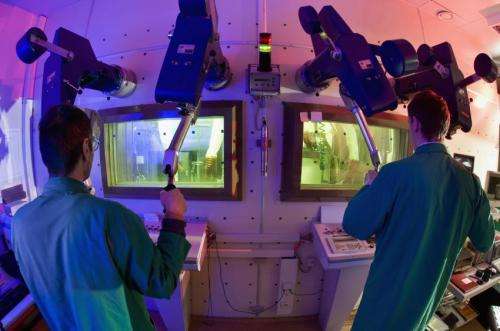Longer service lives for European nuclear power stations

New nuclear power stations are being built on all sides of Germany and service lifes for existing facilities extended. It is therefore important that German experts remain able to assess the safety of the nuclear power stations in neighbouring countries in the future as well, notwithstanding the German government's decision to opt out of nuclear energy. For this reason, scientists from Germany have participated in the LONGLIFE project funded by the European Union with approx. 2.7 million EUR. The partners in the project have investigated how pressure vessels of nuclear power stations age. They presented their findings at an international workshop in which 70 experts took part. The EU project was coordinated by the Helmholtz Zentrum Dresden-Rossendorf (HZDR).
European nuclear power stations have a designed end of life of about 40 years, as a rule. Independent of the German energy turnaround ("Energiewende") and the associated decision to opt out of nuclear energy, the prerequisites for longer service lifes of nuclear power stations (60 to 80 years) are being achieved.
With the advent of longer operation times, the aging effects on the reactor materials cannot be allowed to limit or reduce the safety of nuclear power stations. The condition of the materials is therefore regularly checked. The reactor materials slowly change their mechanical properties as a result of highly energetic neutron radiation that arises from nuclear fission in the reactor during operation, and the materials lose their toughness – they become brittle. This effect is caused by the interaction of the neutrons with the lattice steel atoms and is mirrored for instance in the fracture behavior of material samples under test.
With longer operation times, the materials are exposed to higher total neutron doses. What effects does this have on the materials? Are the procedures and predictive models currently used to monitor the embrittlement also suitable for long-term operation of nuclear power plants, or do they need to be adapted? These questions are the focus of the EU LONGLIFE project in which 16 partners from nine European countries have been participating.
The embrittlement during long-term operation has been investigated using numerous material samples in different irradiation conditions, made available by the project partners. The mechanical properties of the irradiated materials can only be tested in hot cell testing facilities like those at the HZDR. Researchers are particularly interested in the influence that the intensity of the radiation (called the neutron flux) has on the materials over a certain time interval. Materials that have been irradiated at a low neutron flux over many years exhibit different changes at the atomic level than materials exposed to a higher neutron flux over a shorter period of time. This effect and others that are significant during long-term irradiation are now being taken into account during monitoring of the materials' aging. A corresponding recommendation has been developed as part of LONGLIFE.
Provided by Helmholtz Association of German Research Centres




















